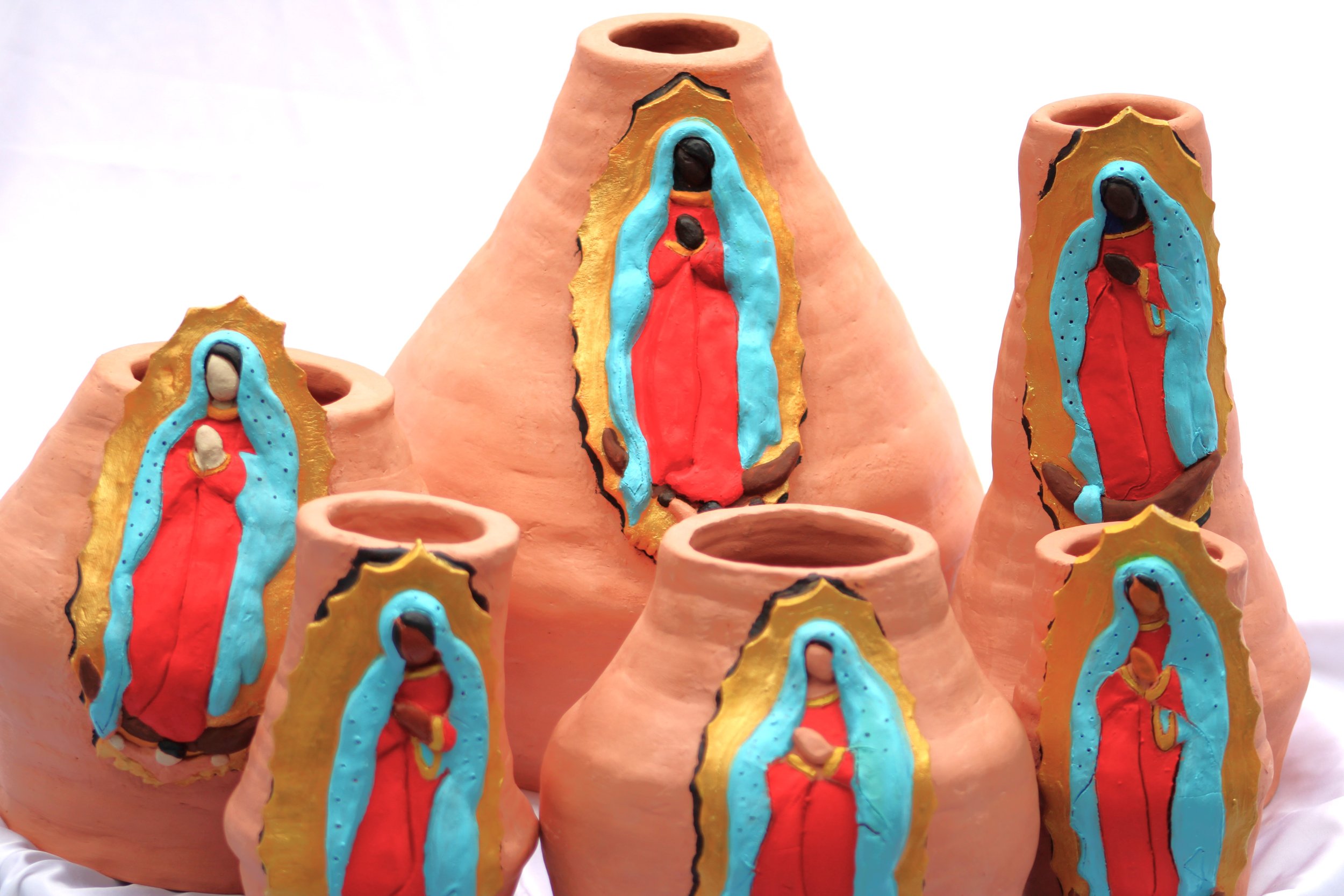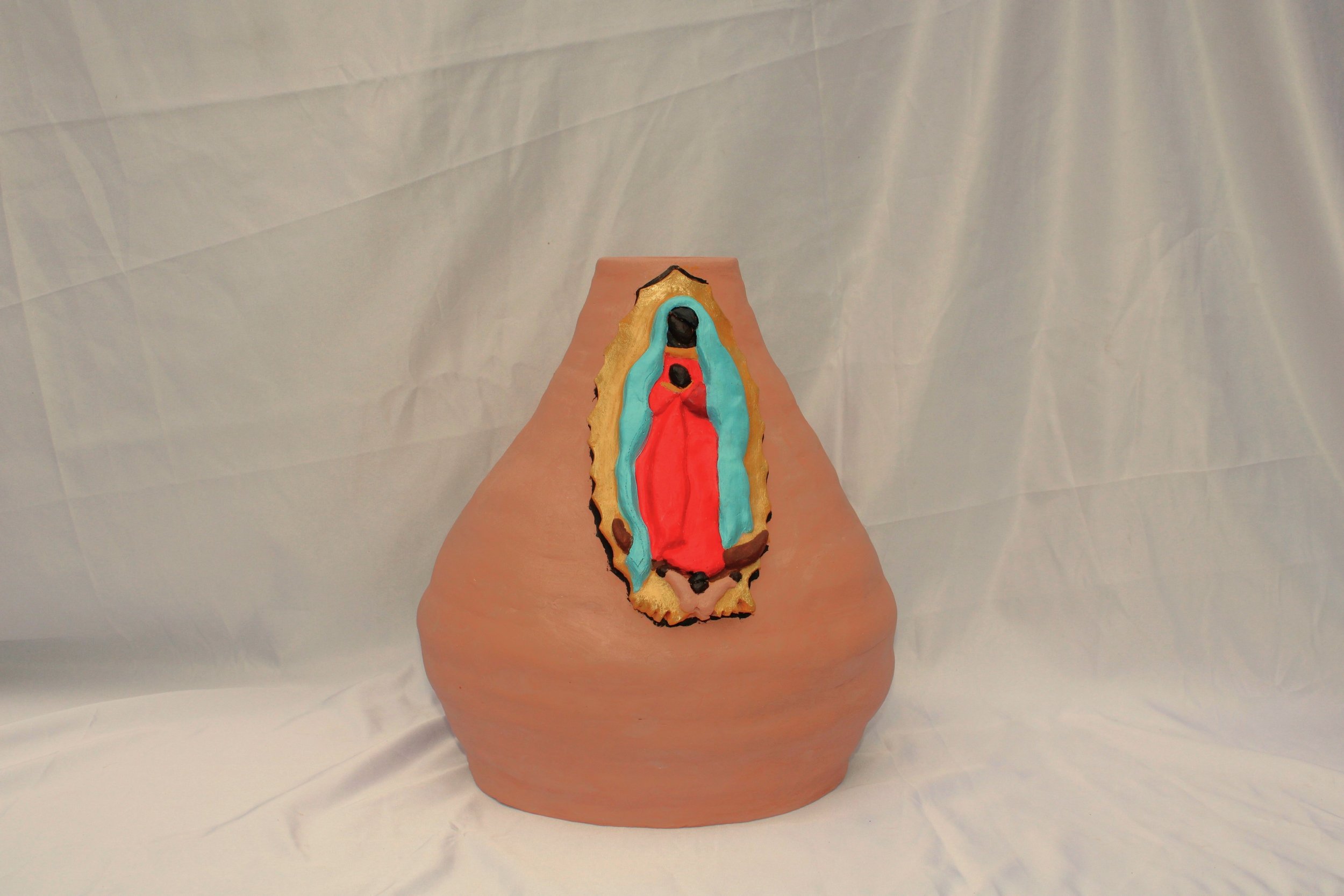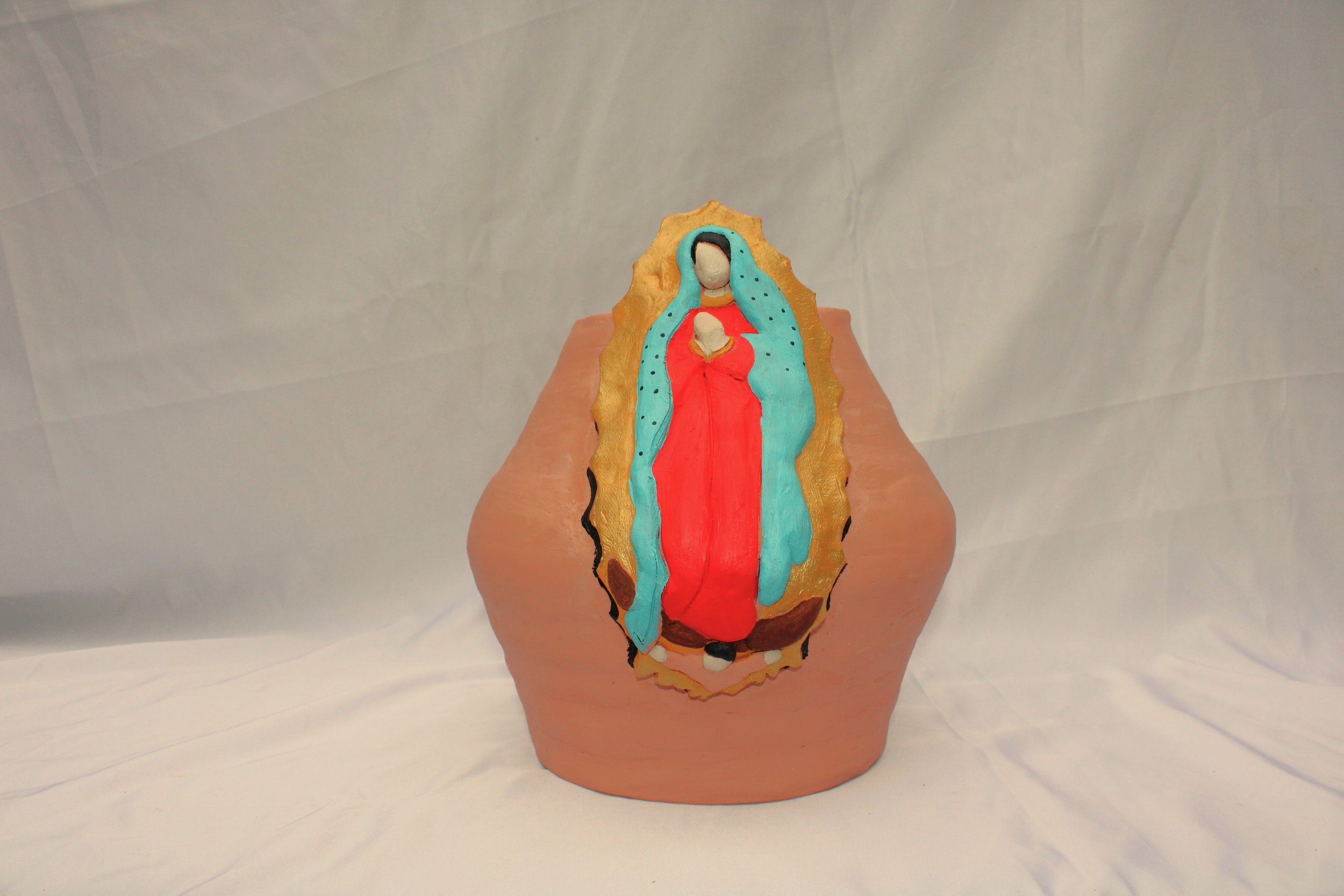
A Vessel for the Spirit
Chloe Verdun
I am Black, european, Indigenous, and Latina. I’ve spent my whole life seeking to understand the hybridity of the different cultures and backgrounds I have been surrounded by. My grandmother Tilly Roybal is from an Indigenous-Mexican and spanish background, she migrated from New Mexico to Colorado with my grandfather Juan Roybal seeking mining work in Minturn, Colorado. She was a devout catholic, regularly praying the rosary and Hail Mary. When I was five years old, she began to take me to ceramic classes. I found my love of art and God through these experiences. Twenty years later with a concentration in ceramics, I am finding that my grandmother kept secrets from us for survival purposes, namely her Indigenous identity. For example, one of my great grandmothers was also a curandera which is a healer. In Pueblo tradition the maternal lineage passes down wisdom and ancient teachings which my grandmother and mother did for me.
Growing up in a predominantly black catholic church located near MLK Boulevard called Cure d’Ars, I remember seeing Jesus and Mary represented by dark, medium, and light/pale skin tones. My worldview was that I saw these images as multiple selves, all of them are my identity.
A Vessel for the Spirit is an installation of God’s Eyes along with vessels depicting maternal catholic figures. The vessels are coil built, a process I have loved since I began working with clay with my grandmother as a child. Through research I learned this is how my Pueblo ancestors would build pots. My ancestors did not make these types of vessels for “art”, they were used for utilitarian purposes and for sacred religious practices. They were often destroyed by colonizers. They did not become an art object until Indigenous people had to make money for survival and westerners fetishized their culture.
I grew up being “too white” for my Black friends and “too Black” for my Mexican friends and when I was in my suburban classroom full of white children, they knew I was not “just white” I had to be mixed with something. Mary, the Virgin, and the Black Madonna are all represented in my work. My body is a vessel, and these creations embody my intersectional identities. I am not here to make people feel comfortable. I make art for people that share in this feeling of in-betweenness. In my experiences in higher education and gallery spaces, I and my art do not belong here. My pots occupy this space of non-belonging- an institution that was originally created for white men only. The pots are unglazed, refusing to adhere to the standards of what constitutes a “finished” work. They are placed on a kitchen table in lieu of pedestals, refusing to assimilate to the white-walled confines of a gallery.



